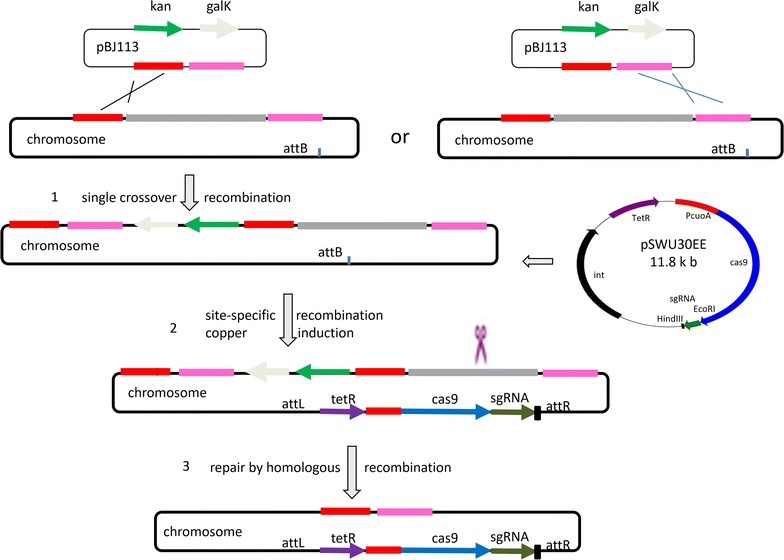Fig. 2.

The diagrammatic sketch describing the progresses for the genome edition. Firstly, the suicide plasmid pBJ113 was integrated into the genome by a single crossover of homologous recombination at one of the two homologous arms constructed in the pBJ113 plasmid, which were designed at the places flanking the target gene cluster. Secondly, a CRISPR/Cas9 editing plasmid pSWU30EE was transferred into M. xanthus genome by site-specific integration. The pSWU30EE plasmid contained an inducible promoter-driven cas9 gene and a constitutive promoter controlled sequence-specific sgRNA. Thirdly, the expressed Cas9 was guided by the sgRNA sequence to target at the complementary chromosomal site for cleaving, producing a double-strand break in the chromosome. The cleaved chromosome was repaired by the other homologous arm that was constructed in the pBJ113 plasmid in a homologous recombination repair mechanism. After a double crossover of homologous recombination, only the cells with the deletion of the target fragment were survived. According to the design, the recombination occurred at either of the two homologous arms, which had been constructed in the pBJ113 plasmid. During the deletion of the myxovirescin gene cluster in DK1622, we confirmed that integration of the pBJ113 plasmid into the genome of DK1622 occurred via the left arm by a single crossover of homologous recombination. After the integration of pSWU30EE and induction, the double-strand break was repaired by second crossover homologous recombination via the right homologous arm
